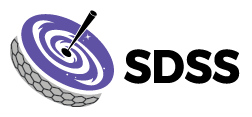Sky regions selection
To determine astrophysical quantities accurately we need a precise measurement of the spectroscopic features introduced by the physical processes happening in the Earth’s atmosphere. These features are generally referred to as “sky lines” and contaminate the raw spectra of our science targets, so it’s critical that we measure and remove them from our science spectra. The sky lines change with location on the sky and time, and need to be measured along, and colocated with our objects of interest. For each design, a fraction of the available fibers is assigned to empty regions of sky. Since those regions don’t have significant emission from astrophysical sources they provide a good measurement of the sky lines around that location and at that time.
Selecting good sky regions is critical, and different science programs have different requirements. Keeping that in mind, target selection generation v0.5.3 includes several sky region cartons, chosen using different criteria. To select acceptable sky regions, we first divide the sky into HEALPixel (Gorski et al. 2005) “tiles” with nside 32 (approximately 3.4 deg2/pix, about the area covered by one FPS design). Each tile is then divided into the HEALPixels of nside 32768 (41 arcsec2) that we call “candidate” regions. From this pool of candidate regions we select the valid regions, those that don’t contain an object in a given source catalogue and that lie further than a magnitude-dependent separation from the nearest potentially contaminating astrophysical source. This minimum separation is computed as s* = s + (mthres-m)β/a, where s=5 arcsec is a minimum radius floor, mthres is a brightness threshold (14 mag). The a=0.15 and β=1.5 parameters control the scaling of the exclusion radius with brightness, and are set to conservative values. For each tile, we downsample the pool valid sky regions to achieve a certain number density per square degree on the sky, while trying to select regions that are uniformly distributed across the tile.
We repeat this process to select valid sky regions for each one of the 2MASS Point Source Catalog, Gaia DR2, Tycho2, Pan-STARRS1-DR2, Legacy Survey DR8 catalogues, and the 2MASS Extended Sources Catalogue. For the latter, sources are considered to be valid if they lie outside the extrapolation/total radius of the source.
Selecting only sky regions (i.e., HEALPix nside 32768 locations) that are considered valid in all the input catalogues would produce a very constrained list of sky regions, with poor or null coverage in many sky locations (since Legacy Survey DR8 and Pan-STARSS1 are not all-sky). Instead, we created a number of sky cartons that can be used depending on the sky subtraction requirements of each design. Those cartons are described below.
BOSS sky cartons
Observations targeting faint extragalactic populations in dark Moon time require extremely good sky subtractions, and we reserve 20% of the BOSS spectrograph fibers for sky observations. Those locations must be empty of astrophysical sources down to the magnitude limit of the deepest wide area imaging that we currently have available (e.g. Legacy Survey DR8, Pan-STARRS1).
For dark time observations with BOSS, target selection generation v0.5.3 includes three sky cartons, in decreasing order of preference:
- ops_sky_boss_best
- ops_sky_boss_good
- ops_sky_boss_fallback
ops_sky_boss_best provides the best possible sky regions, although with strong limitations. These sky regions must be “valid” in each of the 2MASS (point- and extended sources), Tycho2, and Gaia DR2 catalogs. Furthermore, selected sky locations must be within the Pan-STARRS1 or Legacy Survey DR8 survey footprints, and not be contaminated by sources from either catalogue.
ops_sky_boss_good is a bit less restrictive and does not require the sky regions to be valid for Pan-STARRS1 or Legacy Survey DR18, making it an all-sky carton except for the Galactic bulge and some regions in the Magellanic clouds.
The final BOSS sky carton, ops_sky_boss_fallback is used as a last resource to select skies in areas not covered by the two previous cartons, or where they don’t provide enough target density. The ops_sky_boss_fallback carton loosens the radial exclusion criteria, preferring locations that lie furthest from Gaia DR2 sources, but requiring only that the sky location lies more than 3 arcsec from a Gaia DR2 or Pan-STARRS1 source, more than 5 arcsec from any 2MASS source, and more than 15 arcsec from any Tycho2 star.
APOGEE sky cartons
APOGEE bright time science targets usually have less stringent sky subtraction requirements and can tolerate some amount of sky line contamination. For these designs, a smaller percentage of fibers/robots is allocated to sky regions.
For APOGEE fields v0.5.3 includes two sky cartons:
- ops_sky_apogee_best
- ops_sky_apogee_good
ops_sky_apogee_best positions are selected from valid sky regions for 2MASS (PSC and extended), Gaia DR2, and Tycho2. ops_sky_apogee_good targets are used in regions within the disk and the bulge where the “best” carton does not provide enough skies. These positions have a maximum nearest neighbour brightness of 2MASS H=10, and candidates lying farthest from 2MASS contaminants are preferred.
